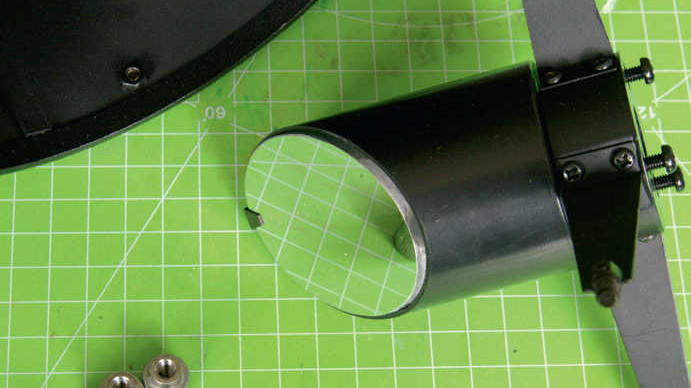Relaxation techniques
Tense neck muscles require a comfortable observing chair. And strained mirrors simply need a little play.
 Secondary mirror frames can put pressure on the mirror. S. Wienstein
Secondary mirror frames can put pressure on the mirror. S. WiensteinRelaxed observing – this also applies to your optics. Whether mirror or lens, both are made of glass or at least glass ceramic. As hard as they may appear, they will deform under pressure, and a poor image is the result. Plastic components especially, but also metal, contract more in cold conditions than the glass that is enclosed within them. A dew shield that is too tight can crush the lens, as can the frame of a secondary mirror that is too narrow. A mirror always contracts differently to its frame when it is cold. If it is glued, the adhesive should be of flexible silicone.
Optics need not only to be firmly anchored, but also to have a small amount of play. Mirrors require sufficient points of support depending on their thickness. Clamps and mounting rings that are too tight should always be avoided.
Sometimes it is more difficult to identify the cause than to fix it. The star test helps here: triangular flaring in the diffraction pattern indicates the three typical retaining clips. Astigmatism, i.e. elongated stars that are small crosses when correctly focused, are a sign of a holder that is under tension. During the cooling phase, when the core of the lens or mirror is still warmer than the surface, errors such as over- or under-correction arise. Typically, these problems disappear during mild nights or at room temperature. Repairs are usually simple. Sanding down plastic parts that are too tight can often be enough.
Author: Sven Wienstein / Licence: Oculum Verlag GmbH
